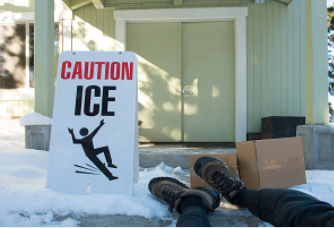Top 10 Tips for Moving in Winter
- The Bachmann Rice Team

- Jan 20, 2022
- 4 min read



Tip #1 - Hire the Pros:
Let’s face it, if you’ve never driven in the snow it’s best not to start with a large van full of your most valuable possessions. Professional movers who have worked all over the country will have experience driving heavy vans in snowy conditions. Let them worry about the truck while you get the feel of driving your own vehicle through the snow and ice.

Tip #2. Pack Wisely:
One of our favourite moving tips is to pack an overnight bag of things you’ll need for that first night/morning in your new home (so you don’t have to rummage through boxes to find your pajamas and toothpaste). For winter moves, it’s a good idea to set aside a few additional supplies:
Coats, hats, scarves, gloves, winter boots or shoes with anti-slip soles.
Coffeepot, styrofoam cups, creamers, sugar, spoons or stirrers (need we say more?)
Toilet paper and paper towels
Dish soap
Extra blankets, sheets, tarps, towels
Ice scraper, shovel, ice melter or salt
Flashlight, jumper cables, roadside flares, and a (fully charged!) cell phone

Tip #3. Prepare:
Don’t save packing for the last minute. Winter days mean less daylight, and you want to spend that time getting to your destination and/or getting everything off the truck. Make sure that everything except morning essentials is packed up BEFORE moving day and plan to finish the move before sunset (as early as 4pm up North!).
Tip #4. Plan ahead with weather forecast:
Check your move-day forecast frequently. Having a good idea of the expected weather situation of that day will help you plan ahead. Doors will be opening all day, so keep the central heating off (or set fairly low) so you don’t over-exhaust your heating system. (Besides, lifting all those boxes and furniture pieces will keep you warm enough anyway.) Get a small space heater to heat selected rooms—such as the bathroom (you’ll thank us later!) and any rooms that small children or pets will be in. (If possible, it might be best to board your pets for the day or send your kids to a museum or the movies with a trusted friend to keep them from getting underfoot.) When unloading the truck, focus on getting stuff INTO the house first. Once furniture and boxes are off the truck and into your house, you can feel free to crank up the heat and sort everything into rooms.

Tip #5. Special Thanks:
Moving boxes and furniture in the cold and snow is no one’s idea of a “fun time” even for those who do it all day long. Providing a hot beverage to warm everyone up will keep your friends, family, and moving crew happy and warm. Set up a coffeepot or insulated hot beverage dispenser with coffee and/or hot water. Set out hot cocoa packets, tea bags, sugar, and creamers for quick beverage prep. A special thank you can go a long way. Make everyone committing to helping you feel appreciated.

Tip #6. Fragile Items:
Glassware and other fragile items become more frigid and prone to breaking in the cold, so wrap them with bubble wrap. And because things are bound to be more slippery in the winter, double-wrapping fragile items is a good idea in case of a fall. Electronics are also not fond of the cold. They also hate water, so you might want to even wrap a box full of electronics in a tarp if you have to move in the rain or snow. Certain materials can become more breakable when the mercury drops, so double wrap your fragile items. If anything could be damaged by cold temps (science tip: water expands as it freezes!), leave it off the moving van. Electronics, plants, snow globes (isn’t it ironic?) are some examples of things that should travel with you instead of the cold moving van.

Tip #7. Ice:
What can be worse than a mover slipping in front of your house? A mover who is losing balance while holding your most expensive china. Salt icy walkways the night before and the morning of the move. This will ensure that your movers can safely navigate your belongings from your home to the truck. It can also avoid any concerns with your load shifting when the truck slides on the ice in the driveway or potentially gets stuck.

Tip #8. Mud:
If there are any muddy patches between your home and the truck, cover them with plywood sheets so we can safely move your belongings. You can also leave a mat or moving blanket outside the front entrance to help prevent mess however, movers can’t be expected to wipe their feet each time they go in and out so take proper precautions and make sure it’s not a tripping hazard.

Tip #9. Snow:
In the unlikely event that it snows on move day, ensure that the walkway is shoveled clear. Don’t forget about the unload! If possible, ensure that walkways to your new place are also cleared.

Tip # 10. Travel:
Driving in snow or in inclement weather always takes longer than driving on clear roads, so allow plenty of extra time to get to your destination. If movers will be meeting you at your new home to unload your belongings, keep in contact with the driver so they’ll know if any schedule changes come up. Plan out your route in advance, but be prepared to make changes on the fly. Snow plow schedules are not always predictable, so you may find that your preferred route is unavailable. Most smartphones these days come with mapping apps that can readjust when you change course.













Comments